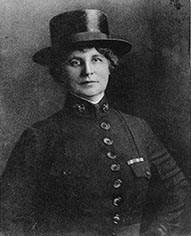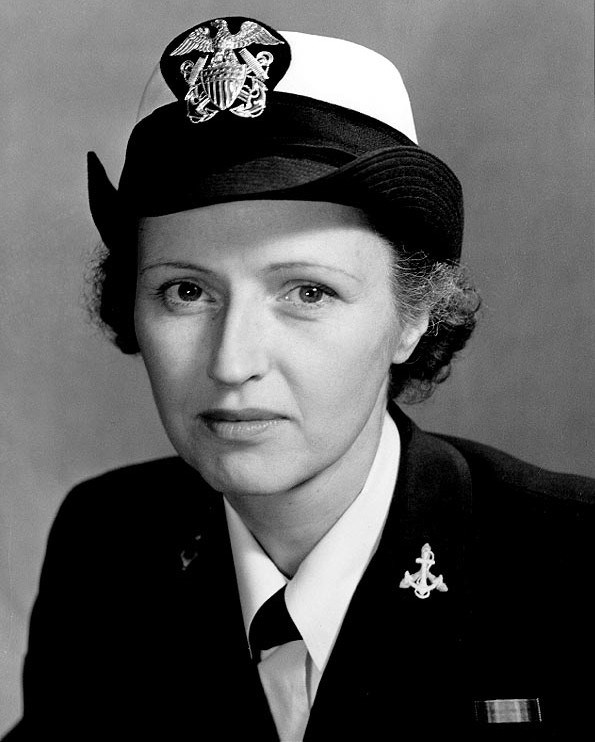Last updated: November 17, 2025
Article
Women in World War I
Five million men were mobilized for service in the Great War.
Over nine million women mobilized themselves.

Malmstrom Air Force Base
Introduction
The contributions made by American women during the First World War are often overlooked, yet women played a crucial and defining role in America’s success and the Allied victory. Without their efforts, tens of thousands of men needed at the front would have remained tied to jobs in agriculture, industry, and home-front military roles—placing the nation’s wartime success in jeopardy.
The year 1917 was a watershed moment for the United States. Militarily and economically, America was cementing its position as a world power. Industry was booming in the run-up to mobilization, and American agriculture was shipping enormous quantities of food to allied nations in Europe.
At the same time, the women’s suffrage movement stood on the brink of a historic breakthrough: the possibility of full citizenship through the right to vote for twenty million American women. Though far from assured, enfranchisement seemed closer than ever before.
The movement’s two major organizations pursued distinctly different strategies. The National American Woman Suffrage Association (NAWSA), led by Carrie Chapman Catt, believed that full participation in the war effort would demonstrate women’s patriotism and strengthen the case for suffrage. The National Woman’s Party (NWP), under Alice Paul, focused solely on securing the vote. Paul supported wartime participation only insofar as it advanced suffrage; if it did not, she was willing to challenge the government directly. Her group’s picketing of the White House—seen by many as unpatriotic or even treasonous—led to the imprisonment of 168 NWP members.
With America’s entry into the conflict, wartime production surged. Hundreds of warships were built and outfitted, factories converted to producing airplanes, tanks, rifles, uniforms, and countless other necessities for a rapidly growing military. Agriculture was also pushed to full capacity, now tasked with feeding a vast army and navy in addition to civilians at home and allies abroad. Looming over all of this was a critical concern: as men left farms, factories, and offices for military service, who would fill the gap?
America’s women stepped forward, answering the nation’s call.

U.S. Navy
Women Mobilize for War
When the United States entered the war in April 1917, former NAWSA president Anna Howard Shaw became a driving force in mobilizing American women for the national effort. She established the Women’s Committee of the Council of National Defense to organize the millions of women eager to serve and to match their skills with the nation’s needs.
It is important to remember that at the time, the prevailing belief was that “a woman’s place is in the home.” To calm concerns about women stepping beyond traditional roles, Shaw’s organization—and many others—went to great lengths to reassure the public that women would not become “masculinized” by taking on jobs normally held by men.
Newspapers and magazines, especially women’s publications, strongly encouraged women to join the war effort. Illustrations and articles depicted determined—but always stylish and unmistakably “feminine”—women taking up work on farms, in factories, in munitions plants, and even in military settings.
“All over America today suffragists are leading a back to the land movement… they have put their hand to the plow and are not turning back,” proclaimed The Woman’s Journal. Tens of thousands joined the Women’s Land Army, working in fields, orchards, and farms to free men for military service. They embraced the work and brought in the nation’s wartime harvests, supplying food for civilians, troops, and allies.
Eight million women volunteered for the American Red Cross in countless roles: making surgical dressings, masks, and gowns; operating servicemen’s canteens; assisting in veterans’ hospitals; and providing recreation for recovering service members. The Red Cross also trained and supplied nearly 20,000 nurses to the Army, Navy, and U.S. Public Health Service.
The Red Cross Motor Service, composed almost entirely of women—many using their own vehicles and trained as mechanics—provided transportation to canteens, hospitals, and camps. Some served as motorcycle messengers. By the end of the war, more than 12,000 drivers had logged over 3.5 million miles.
The Salvation Army “Lassies” became a beloved presence among American troops at home and overseas. Operating close to the front, they provided coffee, donuts, letter-writing assistance, mending, and other comforts to soldiers and sailors at embarkation ports, field canteens, and rest areas.
America’s librarians also joined the national effort. More than 1,100 library workers served at home and abroad, erecting 36 camp libraries, distributing nearly ten million books and magazines, and raising more than five million dollars in public donations.
Perhaps the most symbolic shift in the nation’s view of women’s capabilities was their admission into what had long been considered the ultimate male domain: the military.
Seven thousand women applied to serve as “Hello Girls,” the telephone operators of the U.S. Army Signal Corps. Just 223 were selected for overseas duty, some serving close to the front lines. These women took the same oath as soldiers, received equal pay, and wore the Signal Corps insignia. Seven earned the Distinguished Service Medal. Yet upon their discharge, the “Hello Girls” were denied veterans’ status and its benefits—a wrong not corrected until 1979, when only a few were still alive.
Meanwhile, as the Navy launched more and more warships, the demand for sailors grew dramatically. Enlistments and the draft alone could not keep pace with the need.

U.S. Navy / National Archives, 1943
Many thousands of sailors were assigned to shore-duty positions as clerks, truck drivers, armorers, instructors, medical technicians, radio operators, and in other essential roles. With so many men tied to these duties and unavailable for the fleet, something had to be done. Enter Josephus Daniels, Secretary of the Navy.
Desperate to free sailors for combat operations, Daniels identified a loophole in the Naval Act of 1916, the law governing who could be enlisted in the Navy. Nowhere did it specify that only men were eligible. Seizing the opportunity, Daniels began actively recruiting women into the ranks—and the response was overwhelming. Patriotic young women, many of them suffragists, flocked to recruiting offices.
By March 1917, Daniels had begun enlisting these eager volunteers as Yeoman (F). They served as stenographers, clerks, radio operators, messengers, truck drivers, ordnance workers, mechanics, cryptographers, and in countless other non-combat shore-duty roles, freeing thousands of sailors to join the fleet. In total, 11,272 women enlisted in the U.S. Navy during the war. When they left the service, Daniels ensured they received veterans’ status and priority consideration for civil service jobs.
The Army and Navy Nurse Corps also made enormous contributions, providing 22,804 nurses who served at home, abroad, and aboard hospital and troop ships. Lenah Sutcliffe Higbee, chief of the Navy Nurse Corps, became the first woman awarded the Navy Cross, second only to the Medal of Honor. Army nurses served not only in the United States but also in France, Belgium, England, and even Siberia. Many were wounded, and more than 200 died in service. Within the Navy Nurse Corps, 36 women lost their lives. Their service was far more than an inconvenience—it often required the ultimate sacrifice.
The Battle for Suffrage
The service and sacrifice of American women during the war went far beyond putting their lives on hold, delaying marriage and children, or postponing higher education. More than 600 of these patriotic women lost their lives in service to their nation. The question remained: how would the nation repay that debt?
The suffrage movement itself was divided. Some suffragists supported the war and cooperated with President Wilson in hopes of securing his backing for women’s voting rights. Others protested his reluctance to endorse suffrage and were imprisoned and brutally treated for doing so. Both moderate and militant suffragists continued to exert pressure on the White House, while millions of American women demonstrated—through their service and sacrifice—their claim to full citizenship.
Ultimately, Wilson, long a reluctant supporter, threw his weight behind the cause. On September 30, 1918, with the war’s end only weeks away, he addressed Congress:
“We have made partners of the women in this war… Shall we admit them only to a partnership of suffering and sacrifice and toil and not to a partnership of privilege?”
With the president’s support, the course was set. Although the Susan B. Anthony amendment granting women the right to vote was debated in Congress for many months and fiercely contested in the states during the ratification process, the Nineteenth Amendment to the United States Constitution was finally adopted on August 18, 1920, extending the vote to 20 million women. Their victory was hard-won—through service, sacrifice, protest, imprisonment, and unwavering commitment to the war effort, even at the cost of life. They secured victory abroad and a lasting victory at home.
National Parks and the Great War
World War ITags
- belmont-paul women's equality national monument
- national mall and memorial parks
- women's rights national historical park
- national mall and memorial parks
- world war i
- wwi
- society
- politics
- suffrage
- suffrage movement
- women's rights
- american military
- veterans
- women's history
- 19th amendment
- military history
- political history
- women in the world community
- women in wartime
- women at war
- women in the military
- women and politics
- us in the world community
- shaping the political landscape
